Meet five heroes of the Independence of Mexico
News Category: News, Community News, and People of SMA
-
Published September 16th, 2021
This September 16, Mexico celebrates the 211th anniversary of the beginning of the War of Independence, when the priest Miguel Hidalgo y Costilla, through the ringing of his church bells, called to take up arms against 300 years of Spanish rule.
The period known as the War of Independence began in the early morning of September 16, 1810, when Father Miguel Hidalgo gave the so-called “Grito de Dolores” and ended on September 27, 1821, with the triumphal entry of the Trigante Army, led by Agustin de Iturbide and Vicente Guerrero, into Mexico City.
The following is a brief biographical profile of five heroes of the Independence.
#DiplomaciaCulturalMX La campana ? que el Presidente de #México toca cada año durante la ceremonia del Grito de Independencia ?️ se encuentra en #PalacioNacional y recuerda la heroica gesta del cura Miguel Hidalgo y Costilla, Padre de la Patria en 1810. #MesPatrio ?? pic.twitter.com/7FAdQAYv40
— Embamex Rumania (@EmbaMexRum) September 10, 2021
Miguel Hidalgo y Costilla (1753-1811)
The so-called Father of the Nation was born on May 8, 1753, possibly in the hacienda of San Diego Corralejo, where his family lived. However, after a series of discussions, in 1868 it was officially established that Pénjamo was his birthplace.The priest Hidalgo stood out for being a brilliant man in science, literature, and the arts, in addition to being committed to the oppressed people, for which he organized the beginning of the independence movement to expel the Spaniards after 300 years of domination.
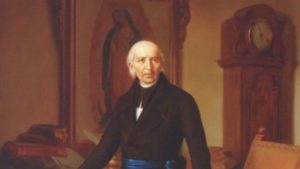
After beginning the struggle for Independence, Hidalgo is captured along with other leaders of the movement and dies on July 30, 1811.
Josefa Ortiz de Domínguez (1768-1829)
Better known as La Corregidora, Ortiz de Domínguez was born on September 8, 1768, in the city of Morelia -although some historians say it was in Mexico City- and died on March 2, 1829, in Mexico City.
Josefa has been recognized as a protagonist of the Independence heroic deed for alerting the organizers of the movement, particularly Ignacio Allende, that the conspiracy had been discovered and they were about to be captured.

She also financed the campaign of Hidalgo, Allende, and Aldama. Despite being arrested, she managed to be released and lived in freedom until March 2, 1829, always supporting ideologically and economically the cause of Mexican Independence.
Ignacio Allende (1769 – 1811)
Ignacio María de Allende y Unzaga was born on January 21, 1769 in San Miguel el Grande, today San Miguel de Allende, Guanajuato.Allende, for having been the main promoter of the uprising and for his military preparation, was the one who naturally could have been the leader of the armed struggle; but Hidalgo, for his charisma, decision, and influence over the people, was recognized as the head of that heroic deed.
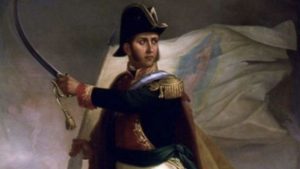
Allende, captured and shot in 1811, was popularly recognized for his ethics and chivalry in command. He was an advocate of order and respect for the civilian population and did not punish or execute his prisoners. A military man whose defense of liberty, equality, and democracy led Mexico’s Independence Revolution.
José María Morelos y Pavón (1765-1815)
Known as the “Servant of the Nation”, Morelos was born on September 30, 1765, in Valladolid, Michoacán (today Morelia in his honor). He was the promoter of the first legislative body in Mexican history, installed on September 14, 1813, in Chilpancingo.Morelos is recognized for being a great military man and statesman. He wrote the famous document “Sentimientos de la Nación” (Sentiments of the Nation) that from that moment on would acquire a remarkable relevance since it became one of the most important texts of the country.
On October 22, 1814, in Apatzingán, the first constitution of Independent Mexico is presented, which has as its fundamental basis the work of the insurgent José María Morelos.
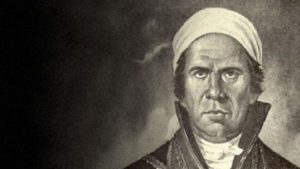
The caudillo actively participated in the second stage of the War of Independence and was captured in 1815 and on December 22 of that year was shot in San Cristobal Ecatepec.
Vicente Guerrero (1782 – 1831)
The Benemérito de la Patria and military insurgent Vicente Ramón Guerrero Saldaña was born in Tixtla (today Guerrero) on August 9, 1782 and died in Cuilapan, Oaxaca, on February 14, 1831.During the Mexican War of Independence, he was head of the insurgency during the Resistance (1816-1821). Guerrero made a pact with General Agustín de Iturbide for the formation of the Army of the Three Guarantees in 1821 and later, on September 27, they entered Mexico City, consummating the Independence.
At first, Iturbide proclaimed independence and placed himself at the head of a provisional government. But a year later, on July 21, 1822, he crowned himself emperor of Mexico. In December of that year several caudillos rose up in arms, and Guerrero joined the uprising in favor of a republican system together with Antonio López de Santa Anna.
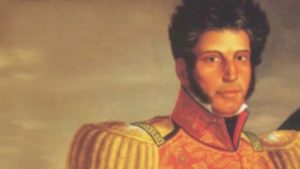
Fiel a su ideario liberal y republicano, Guerrero rechazó la posterior coronación de Iturbide como emperador y, tras su caída en 1823, apoyó al primer presidente de la nueva república, Guadalupe Victoria, al que sucedió en 1829.
Después de un breve periodo en la Presidencia, se produjo una feroz disputa por el poder entre líderes del movimiento insurgente. El 14 de febrero de 1831, tras haber sido traicionado por amigos cercanoss , fue asesinado el último caudillo popular de la Independencia.
-

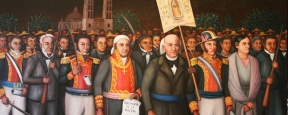
Leave a Reply